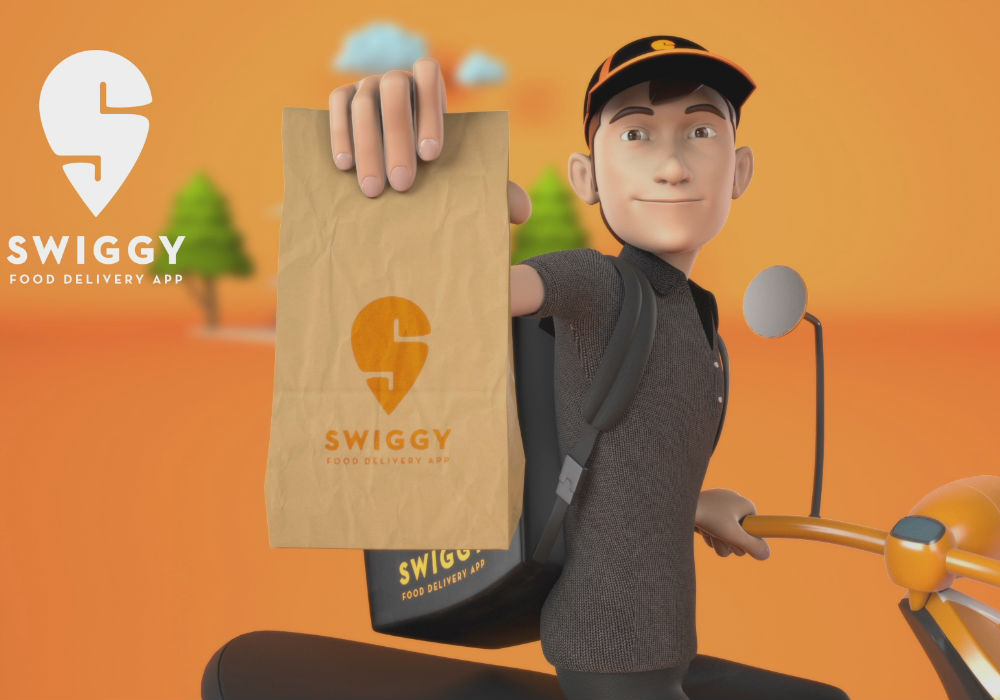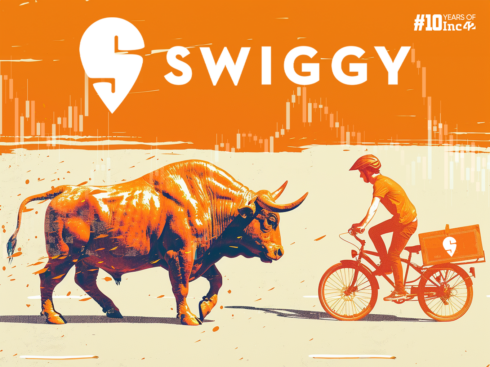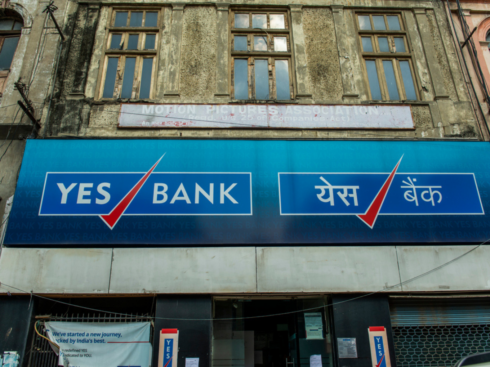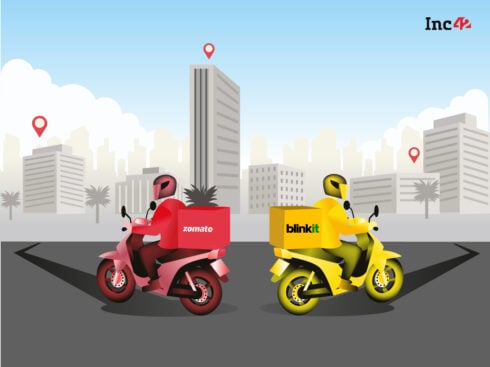SUMMARY
Why Did Naspers Choose To Invest In Swiggy And Not Zomato?
South African Internet and media conglomerate Naspers, which invested in Indian foodtech startup Swiggy recently, had a busy 2016, as far as the Indian startup ecosystem is concerned. And it appears that 2017 is going to be no different.
Last year, Naspers executed two major consolidation plays in the digital space in India. In September, PayU India acquired local startup Citrus Pay for $130 Mn. Then in October, the conglomerate sold ibibo Group to rival MakeMyTrip in a stock deal valued at $1.8 Bn. It was in November that the company revealed plans to set up a VC firm in India to expedite its investments in the country, hinting at its future plans. The firm also roped in Ashutosh Sharma, who earlier led the India team of Norwest Venture Partners.

The strategy as outlined by Naspers was to back scalable technology startups, which leverage India’s consumption growth. With an office in Bengaluru, it wanted to focus on early- to mid-stage transactions ranging from $10 Mn to $50 Mn, for a minority stake. The firm was looking to invest in technology-focussed startups in areas like healthcare, education, and logistics, besides consumer Internet, and online retail – with an aim to close about half a dozen deals by next year.
So, its first few investments in 2017 in India were keeping in line with this strategy. These included plans to pump in money in the $330 Mn reported fundraising being undertaken by MakeMyTrip, through its subsidiary MIH Internet SEA Pte. It then invested in the $5.3 Mn Series A funding of Mumbai-based fintech startup PaySense – along with Jungle Ventures and Nexus Venture Partners.
But, this week, taking a completely different track, it has made its first foray into the foodtech sector in India by investing in the $80 Mn Series E funding of online food delivery startup Swiggy. In fact, Naspers led the round which saw participation from existing investors Accel India, SAIF Partners, Bessemer Venture Partners, Harmony Partners, and Norwest Venture Partners. The current round has pegged Swiggy’s valuation at about $400 Mn.
Interestingly this round comes within a week of it investing about $435 Mn in European food takeaway service Delivery Hero. Delivery Hero happens to own online food delivery platform Foodpanda. So, effectively, when Delivery Hero will further pour in this money to strengthen its Indian business Foodpanda India, it is Naspers that’s strengthening its play in the Indian foodtech sector. Foodpanda India, however, has clarified in an emailed statement that the bulk of investment is not earmarked for India. It said, “Our parent company, Delivery Hero, received the investment to help fuel its growth across multiple markets and it is part of the common pool globally. The impression that the bulk of it is earmarked for foodpanda in India or any other country in specific is incorrect.”
Here arises a question – Why is suddenly a company that runs some of the world’s leading platforms in Internet, video entertainment, and media making a big play for the foodtech space in India? Let’s look a bit deeper.
The Naspers Portfolio
Founded in 1915, Naspers is a global Internet and entertainment group and one of the largest technology investors in the world. The South African Internet and media group operate in more than 130 countries and markets, with long-term growth potential. Its investment journey started in 2001, when it picked up a minority stake in Chinese Internet company Tencent (which operates popular messaging platforms including QQ and WeChat), little known at the time, for $32 Mn.
One key differentiator for the VC fund is that, instead of being a financial investor, it believes in buying the whole company and then back it with funds to scale further.
Naspers is divided into two core segments: electronic media and print media. The electronic media arm of Naspers is MIH Holdings and controls Naspers’ pay-television, Internet, and related technology activities.
Let’s take a look at its investments in India:
- It bought ecommerce and travel organisation ibibo Group in 2009 to/in India, as a joint venture with China’s Tencent Holdings, in which it acquired a stake in 2001. Goibibo, an online travel aggregator headquartered in Gurugram, was then launched as part of Ibibo Group in 2009 itself. Also, it invested an additional $250 Mn in Ibibo Group, raising its stake to 90%, which was finally acquired by MakeMyTrip last year.
- In 2011, Naspers launched its payment gateway PayU in India, which was deployed on Goibibo and ecommerce portal Tradus.in (a part of Ibibo Group, it was acquired by Naspers in 2008 and its services were launched in India in 2009 and was later shut down). Later, in January 2014, online payments solution PayU India was merged with PayU Global and Naspers-promoted ibibo Group became the stakeholder in the new entity.
- Meanwhile, with the ecommerce boom in India, the company was lured into making a strategic investment in Flipkart, and participated in the $150 Mn Series D funding round in August 2012, through MIH India Global Internet Limited. Furthermore, it also participated in Flipkart’s $200 Mn Series E (July 2013), $210 Mn Series F (May 2014), $1 Bn Series G (July 2014).
- In June 2013, through Goibibo, the company acquired 100% stake in online bus ticketing service redBus and placed it under the umbrella of Ibibo Group. In 2014, it also acquired a stake in B2B travel portal Travel Boutique Online (TBO).
- Naspers also owns classified business OLX, which competes with Quikr in India. OLX operates in 40 countries, wherein it invested an undisclosed amount in 2010.
Now one close look at the Naspers global portfolio reveals that all major investments it makes are in three main areas – Internet, video entertainment, and media.
In the Internet space, this encompasses many consumer Internet companies like Buscape, ibibo, redbus, Flipkart, MakeMyTrip, Udemy, Souq.com, among others.

In the video and entertainment space, its investments include video entertainment provider MutltiChoice Africa, Zambian digital pay-TV provider GoTV, and Internet-based subscription video on demand service ShowMax among others.

In the media space, its investments include Africa’s leading media group Media24, printer and manufacturer Novus Holdings, and In Loco Media which uses location and exclusive profiling algorithms to serve audiences with relevant and contextually aware ads.

If you look closely at all these investments, there are only two foodtech companies that Naspers has invested in. One is iFood, Brazil’s leading online food delivery platform that allows clients to place orders both online and via the app. The second is Mexico’s SinDelental, a food delivery startup, which enables online food ordering from restaurants in the main cities of Mexico, having more than 500 restaurants on its platform.
In the background of this strategy, is Naspers’ sudden interest in the foodtech space a sign of the space becoming saner, less cash burning and more profitable?
Food Delivery – A Global Phenomenon
Speaking to Inc42, a Naspers Ventures spokesperson mentioned that – the fact that food delivery is a global phenomenon and, hence, presents an attractive market opportunity for the company.
Food delivery is a large, underpenetrated, and growing market with potential for success across a broad range of geographies that Naspers knows well. Significant traction has already occurred in a number of markets but the vast majority of growth markets are at the beginning of the opportunity cycle. Naspers has deep expertise in building leading marketplace businesses in high-growth markets, including the leading food delivery business in Latin America (iFood in Brazil and SinDelental in Mexico).
No wonder, two investments in a matter of days, reiterate this strategy. In addition, the scale of the two players is also an important contributing factor.
For instance, Delivery Hero is one of Europe’s biggest startups and a leading global online food ordering and delivery marketplace across 53 countries in Europe, the Middle East & North Africa (MENA), Latin America, and the Asia-Pacific region. The Berlin-based company partners with over 300,000 restaurants and recently added another feather to its cap by acquiring rival online food ordering marketplace Foodpanda last December. Swiggy, meanwhile, has reportedly close to 12,000 partner restaurants in eight cities in India.
These are the factors it will look for in other sectors, as well. The spokesperson stated, “We are always looking for new areas to invest in, but they must meet certain criteria. They have to be operating in a high potential market overall and they have to have the ability to scale quickly. In addition, we look for the potential for success across a broad range of geographies. Companies with the right business models within the food market are a direct hit on all three, so we see it as a perfect fit.”
Why Swiggy?
Founded in August 2014 by Sriharsha Majety, Nandan Reddy, and Rahul Jaimini, Swiggy is one of the few leading food ordering platforms among a clutch of formidable players like Zomato, Foodpanda, and Runnr.
For Swiggy, the latest investment takes total funding raised to date to about $155.5 Mn. Last year in September, Swiggy was valued at $200 Mn when it raised a $15 Mn (INR 100 Cr) Series D led by US-based venture capital firm Bessemer Venture Partners with participation from existing investors – Accel India, SAIF Partners, and Norwest Venture Partners.
As per a company statement, the startup has witnessed a six-fold growth in revenues over the last year. An ET report states that the startup posted a 65-fold increase in losses for FY 2015-16, at about $21.2 Mn (INR 137.18 Cr) from about $328K (INR 2.12 Cr) in FY 2014-15. Since then, it has tweaked the cost to consumer by levying delivery charges and surge charges. While it declined to share the current metrics, the platform had recorded 1 million orders in April 2016. The company’s filing with the Registrar of Companies showed that Swiggy’s cash burn stood at around $2 Mn (INR 13 Cr), per month in FY16.
Sriharsha Majety told ET, “We have seen 35% reduction in delivery costs and recorded 6x growth in revenues last year. We will look at a strong growth year ahead.”
To put this in perspective, let’s take a look at rival Zomato’s numbers. The startup, which released a short form unaudited annual report for FY 2017 in April this year, is slowly inching towards profitability with an 81% drop in the annual operating burn for FY17 at $12 Mn compared to the $64 Mn in FY16. Meanwhile, revenues for Zomato’s Indian operations surged to $49 Mn – an 80% rise over FY16. Food ordering revenue grew to $9 Mn in FY ‘17, 8x of FY ‘16. The company crossed 2 Mn orders in March 2017 – a move that gave it a 23% month-on-month growth.
The numbers are skewed in favour of Zomato and for Swiggy, this funding is almost a breather to bolster it up against rival Zomato.
Why Did Naspers Choose To Invest In Swiggy And Not Zomato?
“Food delivery in India is an underpenetrated but massive market and Swiggy has experienced significant growth since it was founded in 2014. Swiggy has attracted over 12,000 restaurants to its platform and has experienced a six-fold growth in revenue over the past 12 months. The company has a consolidated market leadership position across all the cities it operates in and has earned strong consumer trust by delivering meals in an industry-best average of 37 minutes per order,” as per the spokesperson.
Naspers was attracted to the company’s exceptional execution in disrupting online food ordering and delivery. “Swiggy’s ability to create a sustainable business, earning consumer trust through a reliable first-party delivery technology, positions it well for success and the Series E investment will help to bolster their growth plan across the country.”
Needless to say, the investment also demonstrates the firm’s commitment to helping Swiggy achieve its ambitions in food ordering and delivery across India as the company plans to utilise the capital for hiring engineering talent and develop deeper technology for better prediction of demand, consumer preferences and improving delivery efficiencies.
India’s Foodtech Sector: A Melting Pot Of Global Players
By backing Swiggy directly and Foodpanda’s Indian arm indirectly (by pumping funds in its parent Delivery Hero), one thing is clear – slowly, Naspers is deepening its play in the foodtech space in the country.
As it has clearly stated, scale and size play a huge part in this strategy. And, in this regard, Naspers is not far off. As per a sector report by research and advisory firm RedSeer Consulting, online food delivery grew at a staggering pace of 150% to reach $300 Mn in GMV terms in 2016. On an average, the online food delivery players handled 160K orders in a day with an average order value of $5.
The proof is also in the pudding. Platforms are now charging delivery fees for low-cost orders as they look to protect their margins. They are trying out more strategies to rein on in the cash burn rate- for instance, both Swiggy and Zomato are experimenting with Cloud Kitchens, which they will own and rent out to restaurants. Players are also moving towards earning more margins from restaurants, while at the same time reducing burn on acquiring customers through digital advertising.
No wonder, more global players are making a play for the Indian foodtech market. To begin with, in April 2017, Google launched a new hyperlocal services app in India – Areo. The Areo app delivers food and home services for residents in Bengaluru and Mumbai. Last month, Uber made its swashbuckling entry into the sector by launching its on-demand food delivery app UberEATS in India. It has a three-way app for customers, restaurants, and deliveries and claims to have partnered with 200 restaurants, promising a delivery time of 35 minutes.

Despite that, food still remains a tricky business. As per Inc42 Datalabs, 50 foodtech startups raised $152.3 Mn funding. Of the total 105 foodtech startups, 76% were early-stage. Of these, only 24% survived that stage and were able to raise Series A and Series B funding. 2016 saw over 37 shutdowns of foodtech startups. This list includes startups such as iTiffin, Eazymeals, Zeppery, Zupermeal, Tinyowl, TastyKhana and more.
While Naspers did not comment on the entry of deep-pocketed Google and Uber in the Indian foodtech space, but given the growing competition, is it also banking on consolidation among players sometime in the future? I guess, that’s a question which will get answered as the competition to be the first most sustainable and scalable foodtech business heats up – and as they say, if you can’t take the heat, get out of the kitchen.
For now, the conglomerate reiterated that the focus is helping Swiggy achieve its ambitious growth plans.
“Naspers builds leading international businesses that have long-term growth potential and we have helped build the leading food delivery businesses in Brazil and Mexico. Food delivery is a marketplace business and Naspers has deep expertise in building leading ecommerce and classifieds marketplaces globally. We have top talent and expertise within the group to successfully support and grow leading food delivery businesses in high-growth markets across the globe,” concluded the spokesperson.



























